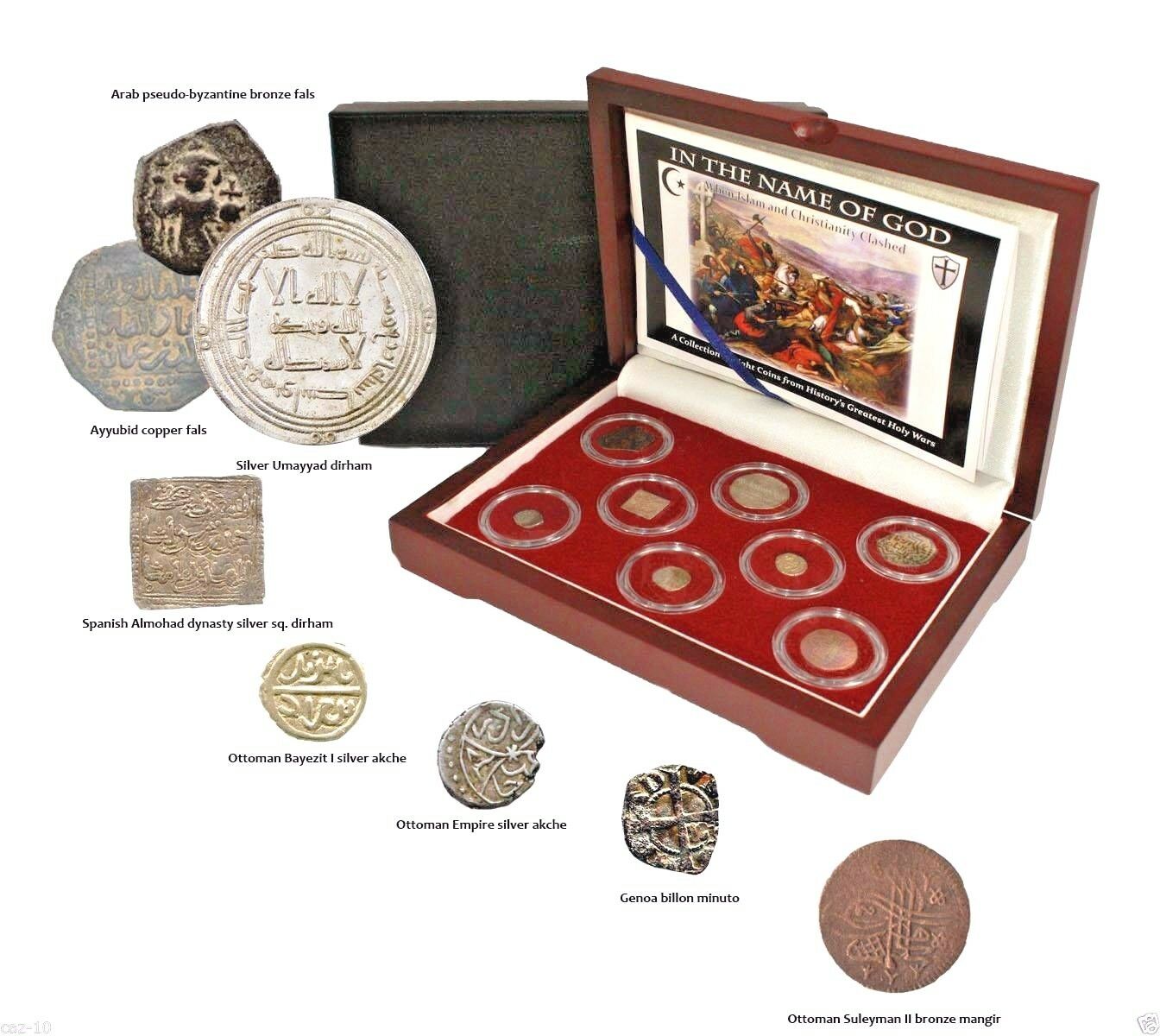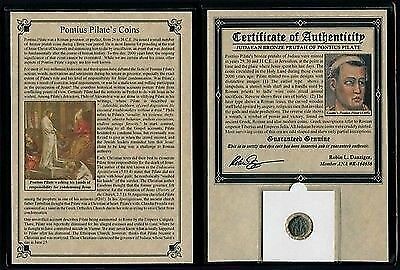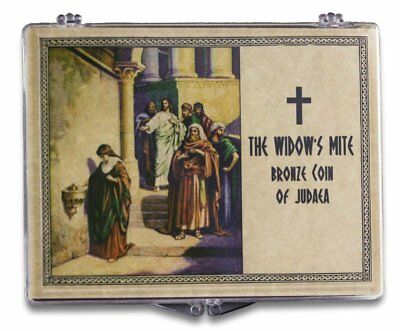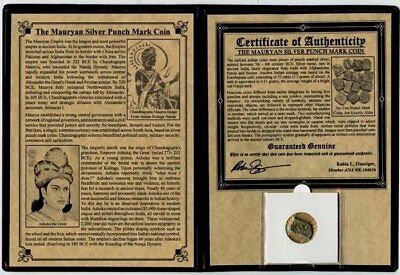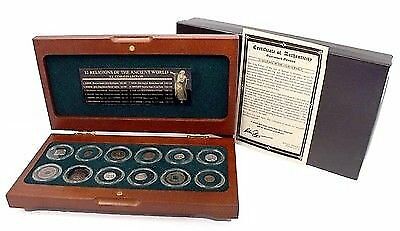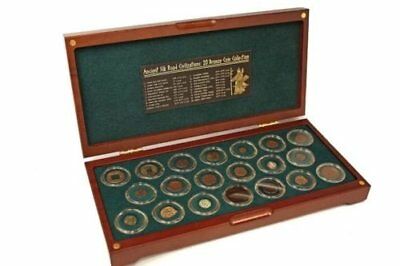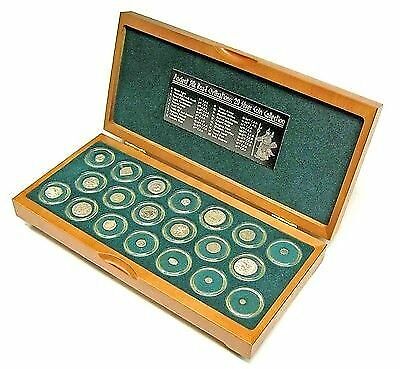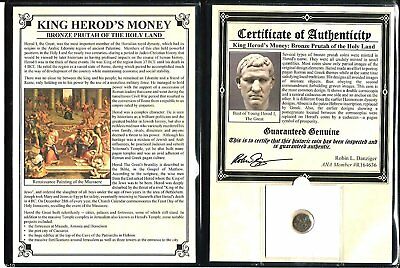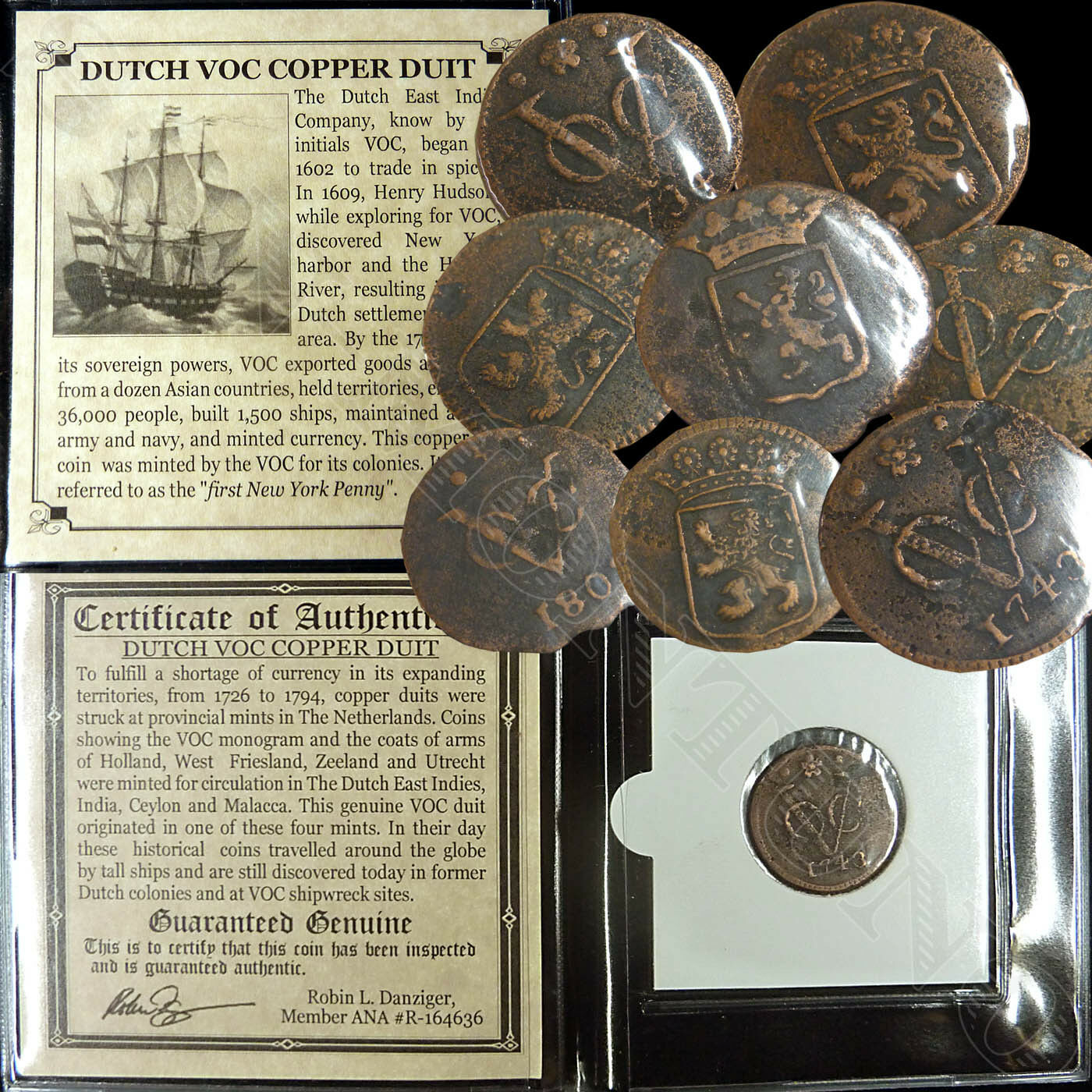-40%
Holy Wars:8 Coins from Eight Historic Battles Between Muslims,Christians, Boxed
$ 146.26
- Description
- Size Guide
Description
Holy Wars:8 Coins from Eight Historic Battles Between Muslims,Christians in beautiful Presentation Box.He found his spiritual calling relatively late in life, and quickly developed a large following. He preached
on the virtues of monotheism, generosity toward the poor and others in need, and kindness toward
others. His ministry was seen as a threat by the religious authorities in the city where he lived and
preached, and those in power persecuted him and his followers. He was widely viewed as the last in a
series of prophets, preaching the ultimate Word of God.
That description applies to both Jesus and Muhammad, who had much more in common than is widely
assumed. Given the similarity of their message, it is both ironic and tragic that Christians and Muslims
have been at war almost constantly since 610 CE, when Muhammad began his ministry in Mecca. This
remarkable collection is a numismatic history of eight pivotal Holy Wars.
# 1: Th e Battle o f Hunayn , 630 CE
Twenty years after beginning his ministry, Muhammad and his army conquered the Arab city of Mecca, a
turning point in the rise of Islam. The city remains the epicenter of Muslim life 14 centuries later. Those
Arabs who did not surrender to Muhammad at Mecca did so after the Battle of Hunayn, fought soon after.
It is one of only two battles referenced in the Koran.
Coin: Arab Muslim Em pire bronze pseudo-byzantine fals; O: Standing em peror; R: Denomination "M"
(indicates "40" nummia); W : 2-5 g; D: 15-23 mm
# 2: Th e Battle of Tours , 732 CE
After a century of incredible success expanding the Caliphate by Mohammad, the Rightly Guided Caliphs,
and the subsequent Umayyads, the spread of Islam into Europe was thwarted by Charles “The Hammer”
Martel at the Battle of Tours in the south of France. The Franks won the battle despite not having cavalry.
Historians describe Tours as “the turning point of one of the most important epochs in the history of the
world.”
Coin: Umayyad silver dirham ; O: Arabic script w / mint names, & family titles; R: Arabic script w / dates
and declaration of faiths; W : 2.4-2.9 g; D: 23-26 mm
# 3: Th e First Crusade, 1096 -1099
Pope Urban II called upon Christians to retake the Holy Lands from the infidels. The Franks heeded the
call, retaking important Middle Eastern cities from Muslim forces, and establishing a Latin Kingdom in
Jerusalem. While subsequent Crusades would prove less successful, the Latin knights would hold
Jerusalem for almost 200 years, taking as their wives Christian princesses from Armenia.
Coin: Ayyubid copper fals; O: Arabic script w / mintnames, & family titles; R: Arabic script w / dates and
declaration of faith’s: 1.9-4 g; D: 18-23 mm
# 4 : Th e Battle of Las Navas de Tolosa, 1212.
Islamic forces began the conquest of the Iberian penninsula in 711. They would hold most of that territory
until 1212, when the Almohads were defeated by Christian forces led by King Alfonso VIII of Castile at the
Battle of Las Navas de Tolosa. While the Muslims would not be repulsed from the whole of Spain until
1492, this battle was the turning point; after the defeat, Muslim influence in Iberia waned, never to
recover.
Coin: Spanish Almohaddy nasty silver sq. dirham ; O: Arabic script w / m int names, & family titles; R:
Arabic script w / dates and declaration of faiths; W : 1.3-1.5 g; D: 13.5 X 14.2 mm
# 5: Th e Battle of Kosovo , 1389
Long a battleground between Islam and the West, the Balkans were taken by the Ottomans at the battle at
Kosovo Field, three miles north of Priština, on June 15, 1389. The Serbs and Turks fought almost to the
death, with most of the soldiers and both commanders—Serbian Prince Lazar and the Ottoman Sultan
Murad I—perishing in combat. The Ottomans prevailed, by virtue of their greater numbers, but lost so
many men that their westward progress was halted. The Serbs, meanwhile, were left with inadequate
numbers of troops to defend their holdings. Serbia did not fully free itself from the Ottoman yoke until
1835.
Coin: Turkey Ottoman Bayezit 1st silver akche; O: Name and patronym ic R: Arabic script w / dates and
declaration of faiths; W : 1-1.2 g; D: 11-13.3 mm
# 6 : Th e Fall of Cons tantinople , 1453
The seat of the mighty Byzantine Empire, for centuries a Christian bulwark against Turkish designs on the
West, Constantinople was the greatest city in Christendom for a thousand years—and a prize coveted by
the Ottomans. After seven centuries of trying, the Muslims finally took the Emerald City in 1453,
effectively ending the Byzantine Empire in the process.
Coin: Turkish Ottoman Empire silver akche; O: Arabic script w / m int names, & family titles; R: Arabic
script w / dates and declaration of faiths: W: 0.1-0.6 g; D: 7.4-11.5 mm
# 7: The Battle o f Lepan to, 1571
The Ottoman sultan’s vaunted fleet met the combined naval forces of the Catholic maritime states at
Lepanto in one of the most important naval battles of all time. Led by J ohn of Austria, a mighty fleet of
212 ships, conveying some 28,500 soldiers and 1,815 guns, sailed south, where it met an even larger
Ottoman force of 251 ships in the Gulf of Patras, near the Ottoman port city of Lepanto. The Christians
had six warships called galleasses, the likes of which the Turks had never seen. Unlike regular galleys,
which only fired from the bow, galleasses were equipped with guns on the side of the ship. Almost
immediately, the Turks made a tactical blunder. Believing the galleasses to be supply ships, they attacked
them—and suffered heavy losses. This paved the way for a rout by the Holy League. Before retreating, the
Ottomans lost 210 ships—most of its vaunted navy. Fifteen thousand Turks were killed, and 3,500
captured. The Ottoman Empire never fully recovered.
Coin: Italy Genoa billon minute; O: Cross w ith fleur-de-lis in one of the angles; R: Stylized gate; W : 0.5-
0.7 g; D: 13-14.9 mm
# 8 : Th e Battle o f Vienna, 1683
At its height, under Suleiman the Magnificent in the mid-16th century, the Ottomans possessed arguably
the most powerful kingdom on earth, a vast and diverse dominion that included most of Northern Africa,
the whole of the Balkan peninsula, Persia, Arabia, the Crimea, and the Holy Land, as well as modern-day
Turkey. By the end of the 17th century, however, the Empire had begun its slow but inexorable decline. The
Ottoman sultan Mehmed IV suffered repeated crushing defeats by the combined forces of Europe,
including the disastrous battle that ended the protracted siege of Vienna in 1683. By 1700, the Ottoman
Empire had lost Hungary, Transylvania, Slavonia, and Dalmatia to its enemies. Its expansion into Europe
was halted for good.
Coin: Ottoman Empire Suleyman 2nd bronze mngir; O: A Tughra, the official insignia of the Turkish
sultan; R: Inscription of title, name, and date; W : 1.3-2.5 g; D: 18.5-19.5 mm
The conflict between Christianity and Islam is readily visible in the coinage of the two faiths. Because of
the strict prohibition on graven images, Muslim coins feature no portraits. Instead, the emphasis is on
calligraphic writing, geometric shapes, and, in the later Ottoman types, ornate signatures. This is in sharp contrast to the Christian coinage, which feature representational art. The cross is prominently featured.
There were a wide range of Medieval-era cross types. Finally, because the Muslim world was more
technologically and artistically advanced than Christendom for the whole of the Middle Ages, the Islamic
coins tend to be of superior craftsmanship, while the Christian ones are more crude.
Data:
Box measures: 7.25” x 5.5” x 1.25”
Coin type and grade m ay vary somewhat from image
All coins in each set are protected in an archival capsule and beautifully displayed in a mahogany-like box.
The box set is accompanied with a story card, certificate of authenticity, and a black gift box.
Over 22,000 positive feedbacks
ANA
Platinum Member # 3163853
All Items Ship Priority Mail.
